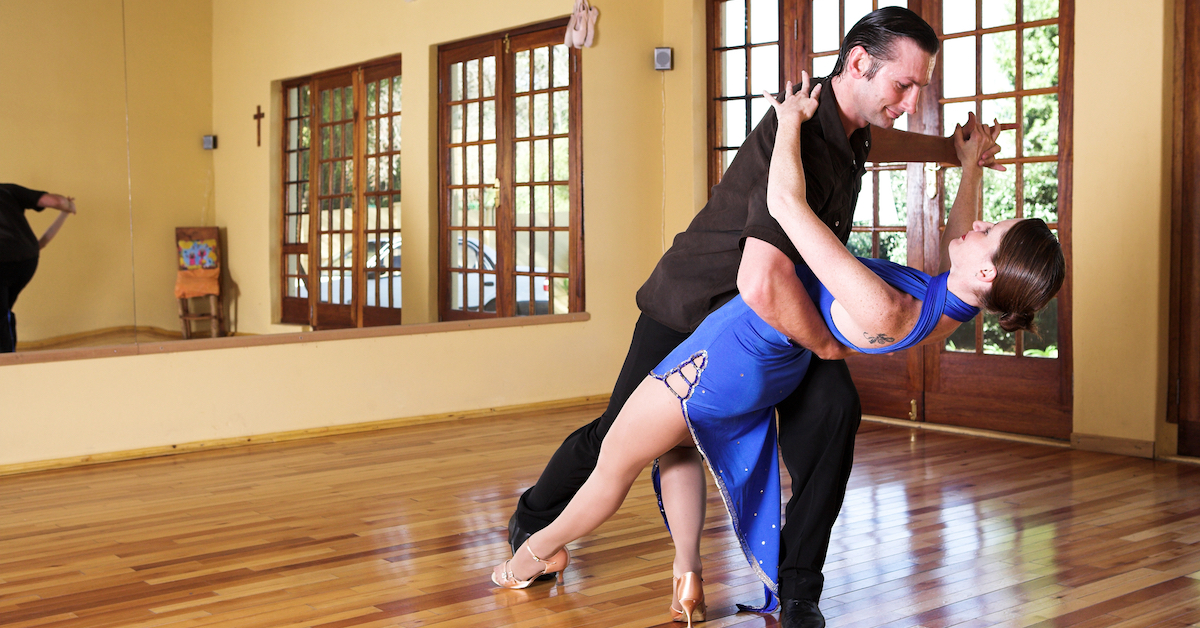In the Christmas movie classic White Christmas, Danny Kaye swirls Vera Ellen around as he croons, “The best things happen while you’re dancing….”
Although Mr. Kaye was likely referring to dancing’s romantic benefits, it turns out that dancing – especially the Latin variety – can also do “the best things” for your memory.
Latin dancing offers a great workout and social outlet, but that’s not all. New research suggests that learning the tricky steps of styles such as the merengue, samba, and salsa can do your aging brain good.1
Why Salsa is Smart
To set the stage for the dancing study, researchers observed the results of a Latin dance program offered to more than 300 Spanish speakers over four years at 12 different Chicago sites.
What did the researchers discover?
After just eight months of classes, the scientists found significant improvement in the dancers’ working memory.
Working memory is the small amounts of information that can be held in the mind while conducting other cognitive tasks.2
“We think it worked for several reasons. More time being spent active that could be a reason. It could be the different components of the dance program itself,” says study author Professor Susan Aguinaga of the University of Illinois at Urbana-Champaign.
The professor explains that Latin dance is an appealing type of physical activity that middle-aged and older folks are enthusiastic about doing.
“Do What You Love!”
“When it’s an activity that they enjoy,” she adds, “then they will be more likely to maintain that activity for longer periods of time.”
It makes sense to me, but could there be more to it? Perhaps it’s the aerobic exercise set to energizing music, producing better blood flow and circulation. Or maybe learning intricate dance steps helps build new neuropathways.
Prof. Aguinaga notes that by nature, dance classes are all about the mental recall. A person is introduced to several steps or moves one week. Then the following week, they’ll need to recall those steps and turn them into sequences.
For instance, participants in the dancing study learned the side basic, back basic, and backside basic dance steps independently. But then they combined them into the salsa dance style.
Study authors suggest that recalling steps could target different aspects of memory, but in an enjoyable way.
They write that “similar to the way the brain manipulates information into chunks, here we see the same process happening with the learning of different Latin dance styles, which helps to explain the improvement in working memory scores.”
To be sure, there are multiple benefits associated with dancing, including socialization, increased strength, better balance, improved memory, and a boost for cardiovascular health.
Dancing Can Reverse The Signs Of Aging In The Brain
The Chicago study is not the first one to explore the benefits of hitting the dance floor.
A 2017 study compared two different types of exercise – dancing and endurance training – undertaken by senior volunteers for 18 months.
Researchers discovered that both activities have an anti-aging effect on the brain. However, only dancing corresponded to a noticeable difference in behavior.
For this study, the seniors were introduced to constantly changing dance routines of different genres. For example, Jazz, Square, Latin-American, and Line Dance.
“Steps, arm patterns, formations, speed, and rhythms were changed every second week to keep them in a constant learning process,” explains Dr. Kathrin Rehfeld, lead author of the study. “The most challenging aspect for them was to recall the routines under the pressure of time and without any cues from the instructor.”
Researchers posit that these extra challenges may account for the noticeable difference in balance displayed by the dancers.
Dr. Rehfeld offers us yet another reason to shun the sidelines and participate fully in the dance of life.
“I believe that everybody would like to live an independent and healthy life, for as long as possible,” she says. “Physical activity is one of the lifestyle factors that can contribute to this, counteracting several risk factors and slowing down age-related decline. I think dancing is a powerful tool to set new challenges for body and mind, especially in older age.”
Born With Two Left Feet?
Even if you’re no Ginger Rogers (who did everything Fred Astaire did, backwards … and in high heels!) learning anything new – whether it’s dancing or a second language – is beneficial for your brain.
Also, the social aspect of dancing can’t be understated either. Even dancing missteps can connect us to our fellow dancers in a very human way. (Just try to avoid stepping on your partner’s toe!)
So perhaps Danny Kaye was right – the best things happen while you’re dancing.







